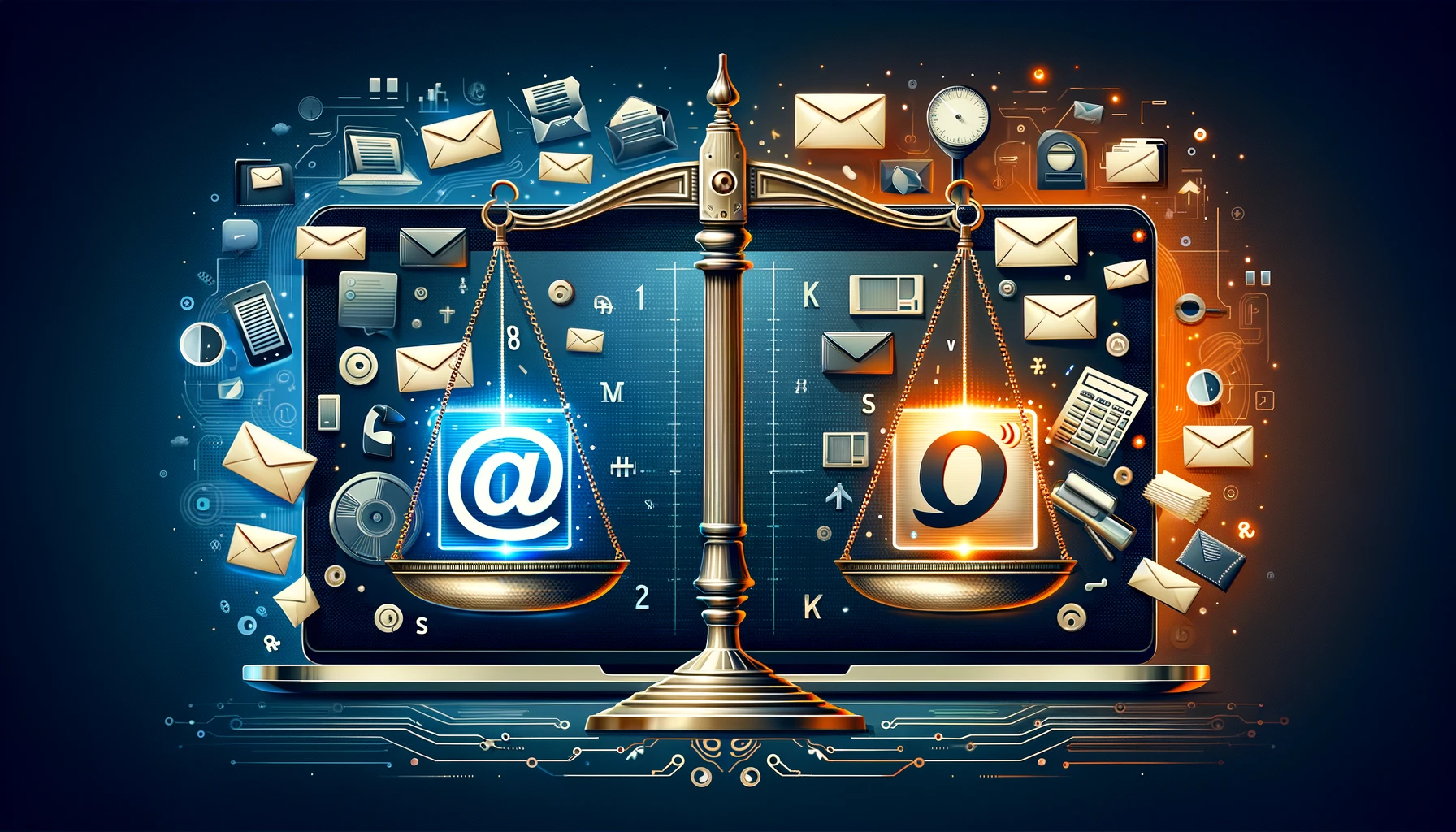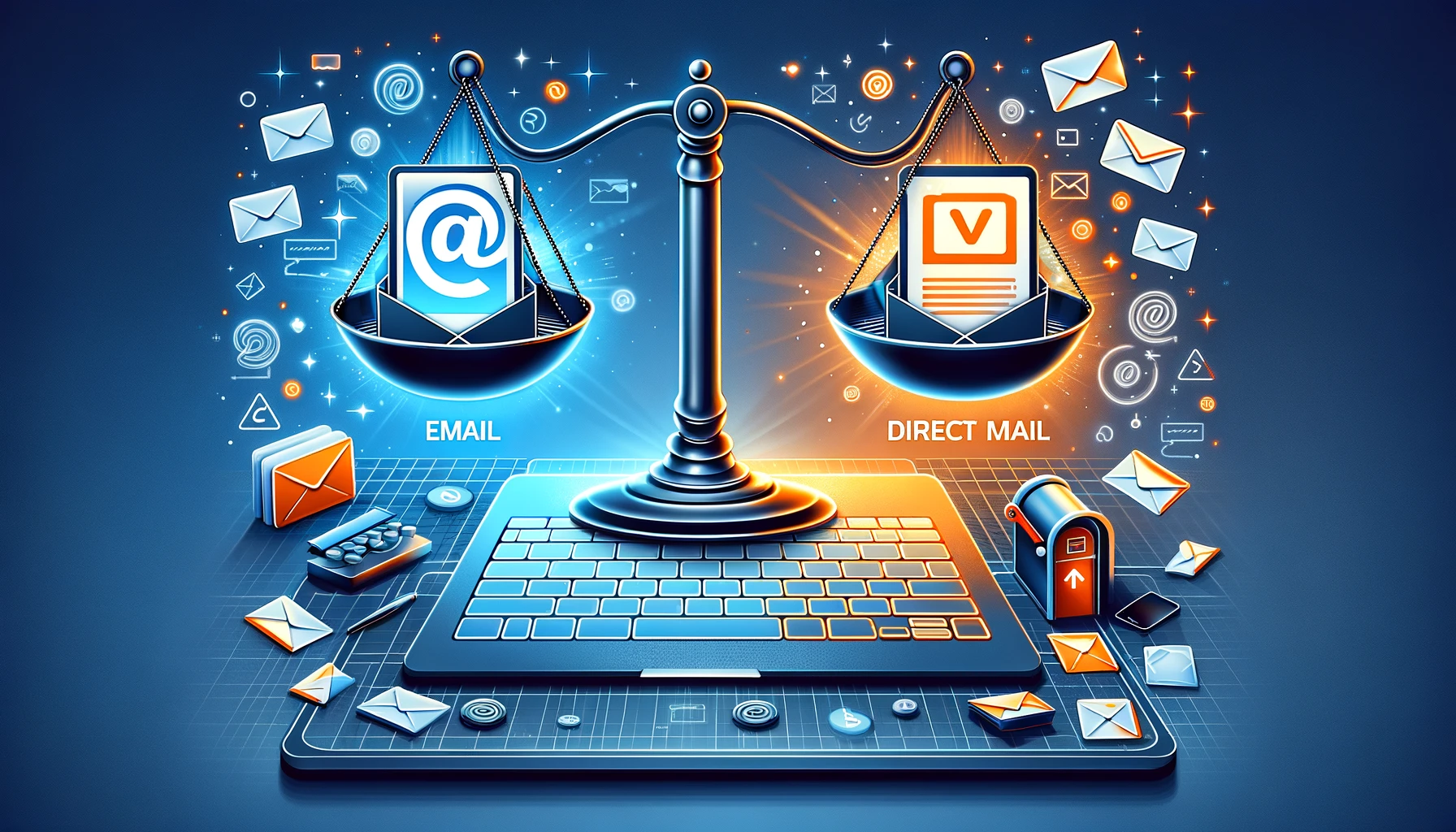Email Marketing vs Direct Mail: The Verdict
What is the difference between direct mail and email marketing?
Understanding the nuances between direct mail and email marketing is crucial for choosing the right strategy to enhance customer engagement and achieve your marketing goals efficiently and effectively.
Exploring the basics of direct mail and email marketing
Direct mail involves sending physical promotional materials directly to potential customers' mailboxes, such as flyers, postcards, or catalogs. It's tangible, can be personalized, and has a physical presence in a customer's home or office. Email marketing, on the other hand, involves sending promotional messages or newsletters digitally to a list of subscribers via email. It's cost-effective, easy to measure (through open rates and click-through rates), and allows for rapid delivery to a wide audience with minimal environmental impact.
Key differences in the approach of direct mail vs email marketing
The key differences between direct mail and email marketing lie in their delivery method, cost, and engagement strategies. Direct mail requires physical production and postage, making it more expensive but potentially more impactful due to its physical form. Email marketing is more immediate, less costly, and offers extensive targeting and personalization options through digital means. While direct mail can stand out in a less crowded physical mailbox, email marketing competes in the crowded digital inbox but allows for quicker adjustments and testing.
Benefits of using direct mail over email marketing
Direct mail offers several benefits over email marketing, including a higher potential for visibility as it's less common to receive personalized mail, thus standing out more to the recipient. The tactile nature of direct mail can enhance the perceived value of the message and brand. Direct mail also has a longer shelf life, often staying in homes or offices for days or weeks. Additionally, some audiences, particularly older demographics, may respond more positively to direct mail, viewing it as more trustworthy.
Which is more effective for a marketing campaign: direct mail or email marketing?
Determining the effectiveness of direct mail vs email marketing for a campaign depends on several factors, including your target audience, budget, and specific marketing objectives.
Comparing response rates of direct mail and email marketing campaigns
Direct mail typically boasts higher response rates compared to email marketing, with industry studies showing direct mail can achieve over a 5% response rate, while email campaigns average around a 1% response rate. However, the effectiveness of each method can vary significantly based on the campaign's execution, target audience, and content quality. Direct mail's tactile aspect can make a memorable impression, but email marketing's ability to quickly reach a large audience and facilitate easy tracking and adjustments also presents a strong case for its effectiveness.
Understanding the ROI for direct mail and email marketing initiatives
Calculating the ROI for direct mail and email marketing initiatives involves evaluating costs, response rates, and conversion rates. Email marketing often offers a higher ROI due to its low cost and extensive reach. However, direct mail can yield a substantial ROI when targeting a well-segmented audience with personalized content. The choice between direct mail and email marketing should align with your overall marketing strategy, considering factors like audience preferences, marketing goals, and budget constraints to maximize the return on investment.
How to choose between email marketing and direct mail for your business?
Deciding between email marketing and direct mail hinges on understanding your business's unique needs, audience preferences, and the specific goals of your marketing campaign.
Factors to consider when deciding between email marketing and direct mail
When choosing between email marketing and direct mail, consider factors such as your target audience’s preferences, the nature of your message, budget constraints, and desired response rates. For instance, younger demographics might respond better to email, while an older audience could favor direct mail. Analyzing the cost-effectiveness, potential for personalization, and the ability to track and measure results also plays a crucial role. Ultimately, understanding your market and the specific objectives of your campaign will guide your choice.
Importance of targeting and personalization in email marketing and direct mail
Targeting and personalization are crucial in both email marketing and direct mail, as they significantly increase the relevance and effectiveness of your campaigns. For email marketing, leveraging data analytics allows for hyper-personalized content based on user behavior and preferences. In direct mail, personalization can range from using the recipient's name to tailoring the offer based on their purchase history or interests. Both strategies aim to create a more engaging, memorable experience that boosts response rates and fosters a stronger connection with your brand.
What are the benefits of choosing email marketing over direct mail?
Email marketing offers distinctive advantages in the digital era, making it a compelling choice for businesses looking to maximize reach, engagement, and ROI with their marketing efforts.
Exploring the advantages of email marketing in the digital era
Email marketing's advantages in the digital era include its cost-effectiveness, immediate delivery, and expansive reach. Unlike direct mail, email allows for quick dissemination of information to a global audience at a fraction of the cost. The digital nature of email facilitates easy tracking and analysis of open rates, click-through rates, and conversions, enabling marketers to swiftly adjust strategies for better results. Additionally, email marketing supports environmental sustainability by reducing the need for paper and physical delivery.
Comparing costs associated with email marketing and direct mail
The costs associated with email marketing are significantly lower than those for direct mail, making it a more accessible option for businesses of all sizes. Email eliminates the need for printing, postage, and physical handling, reducing the overall expenditure. Although direct mail can create a tangible brand experience, the production and mailing costs can quickly add up, especially for large-scale campaigns. Email marketing's affordability, combined with its high ROI potential, makes it an attractive choice for maximizing marketing budgets.
Inagiffy: Your Ultimate Newsletter Marketing Partner
In today's crowded digital landscape, building genuine, lasting connections with your audience is more crucial than ever.
Enter Inagiffy – a premier newsletter marketing agency that understands the transformative power of well-crafted newsletters. We're not just about sending out emails; we're about curating stories, insights, and value that resonate deeply with your audience.
Our end-to-end solutions ensure that from ideation to delivery, every newsletter reflects your brand's essence and speaks directly to your audience's needs and aspirations. Let Inagiffy empower your brand, forging authentic relationships and driving engagement through the potent medium of newsletters.
Dive into the future of meaningful communication with us and watch your audience grow, engage, and thrive.
FAQs
Is email marketing the same as direct marketing?
Email marketing is a subset of direct marketing focused on sending promotional messages directly to consumers via email. Direct marketing encompasses a broader range of channels, including direct mail, telemarketing, and SMS messaging, aiming to elicit a direct response from the target audience.
Which is better direct mail or email marketing?
The choice between direct mail and email marketing depends on your specific goals, target audience, and budget. Email marketing offers cost efficiency and easy measurability, while direct mail can provide a tangible, personalized touch that may stand out more to some audiences. The most effective strategy often involves integrating both to leverage their unique benefits.
What is the difference between email and direct message?
Email is a method of exchanging digital messages across the Internet using a mail client, accessible to anyone with an email address. A direct message (DM) is a private form of communication that occurs within the confines of a social media platform or messaging application, limited to users of that platform.
What is the difference between email and email marketing?
Email is a tool for sending digital messages between individuals or groups, while email marketing is a strategic approach to using email to promote products, services, or content to a list of subscribers, aiming to achieve marketing and sales objectives. Email marketing involves targeted, structured campaigns designed to engage, inform, and convert recipients.


Comments
Your comment has been submitted successfully!